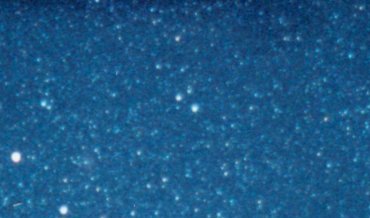
 |
The two Marfaks shine in the center of the picture, Marfak-East (Theta Cas, the brighter) to the right, Marfak-West (Mu Cas) to the left, both surrounded by the glory of Cassiopeia's Milky Way. North is roughly down. The bright stars at lower left are Shedar (Alpha Cas, the brighter) and Achird (Eta Cas). Up and to the right of them (in a rough equilateral triangle) is the faint glow of the diffuse nebula NGC 281. |